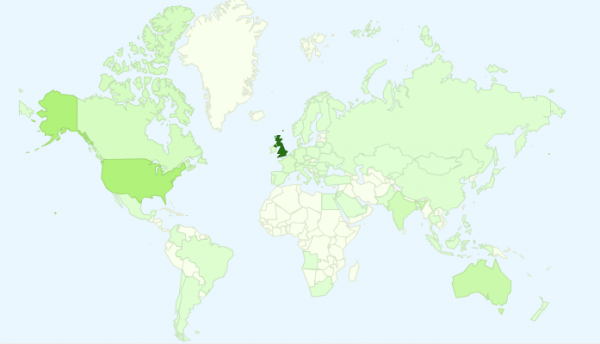Can New Multilingual Markup Create Advantages For Big Brand Optimisation?
Earlier this month, Google announced support for additional multinational HTML markup to allow webmasters to indicate the intended market for translated content and, in doing so, changed the SEO game for multinational businesses. Previously, Google’s Matt Cutts had stated that blocks of poorly (or auto-) translated content would be considered duplicate. Obviously, for verticals which […]
Earlier this month, Google announced support for additional multinational HTML markup to allow webmasters to indicate the intended market for translated content and, in doing so, changed the SEO game for multinational businesses.

Google's new HTML markup allows for internationalisation with little unique content.
Previously, Google’s Matt Cutts had stated that blocks of poorly (or auto-) translated content would be considered duplicate.
Obviously, for verticals which require large numbers of pages in any language (say hello eCommerce!), then this change removes a major stumbling block to localising your content without incurring Google’s wrath and losing the ability to perform in key markets.
I’ve covered auditing your site for duplicate content in a previous column, so I won’t go over old ground in determining if multilingual duplication is an issue for you already or not.
Instead, let’s look at how we would set up to take advantage of Google’s new markup support to deliver SEO performance in multiple markets without triggering duplication filters.
There are two aspects to the updated support:
- Multiple pages which are largely identical (so, not translations) but are intended for different countries.
- Translated content intended for a particular country.
Lets look at a scenario that applies to both criteria.
Assuming we have the following pages with identical (English) content:
- uk.example.com/english-landing-page
- us.example.com/english-landing-page
- ca.example.com/english-landing-page
In the first aspect of the change, Google states they now support disambiguating language variations as a reason for implementing the link rel=”canonical” HTML code.
In practice, this means that a page pointing to another page via a Canonical tag will now be returned if it is understood as being a page specifically intended to be served to a particular country.
So, Google is stating that rather than roll up non-canonical pages to pass their SEO value to the canonical version, they will instead consider all the pages to have the same value, and only use the canonical version when not returning results in the countries specified by our rel=”canonical” links.
It’s a seemingly minor tweak, but the implication is huge for multinational websites. As it now means as long as we can ensure Google is clear which pages are intended for which countries, we don’t run any risk of falling foul of duplication filters and can comfortably predict that pages differing only in minor details (such as, for example, different currencies for products) will be returned when appropriate.
So, in our example, we would simply implement canonical tags according to Google’s specification on all pages pointing back to our page, we’d like to be used in all other countries (I call this the ‘Global Fallback’).
In this example, we’ll call that the US page. That means all pages would have the following in their <head>:
- <link rel=”canonical” href=”us.example.com/english-landing-page”/>
Lets take a look at the second scenario, and what we’d do in our example to disambiguate intended countries and languages.
In the Google post, it’s stated that should we use a regional subtag when linking to a translated page, then Google will assume that the content is intended for that region – which would be the equivalent of registering a subdomain or top level directory in Google Webmaster Tools to a region separately from the rest of the site content.
This also implies, of course, that any untranslated content that nevertheless is intended for different countries can also make use of this tweak.
So, in our example, in addition to the canonical tag, we’d use the following code in the <head> of each URL to disambiguate our languages and intended countries:
- <link rel=”alternate” hreflang=”en” href=”us.example.com/english-landing-page” />
- <link rel=”alternate” hreflang=”en-GB” href=”uk.example.com/english-landing-page” />
- <link rel=”alternate” hreflang=”en-CA” href=”ca.example.com/english-landing-page” />
And that’s it!
We’ve now got the ability to roll out local country features to improve landing page conversions from SEO and PPC in as many countries as we like without incurring any duplication filters from the Big G.
Given we should be able to improve conversion by at least 0.5%-1% by localising, that’s a clear, valuable win for any website and an easy – if fiddly – technical change to implement.
Contributing authors are invited to create content for Search Engine Land and are chosen for their expertise and contribution to the search community. Our contributors work under the oversight of the editorial staff and contributions are checked for quality and relevance to our readers. The opinions they express are their own.
Related stories
New on Search Engine Land